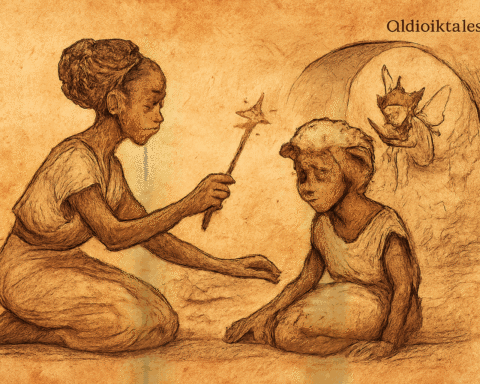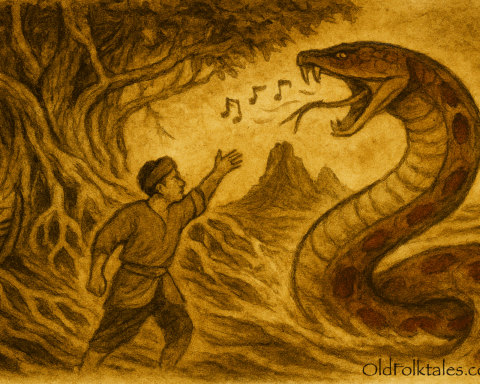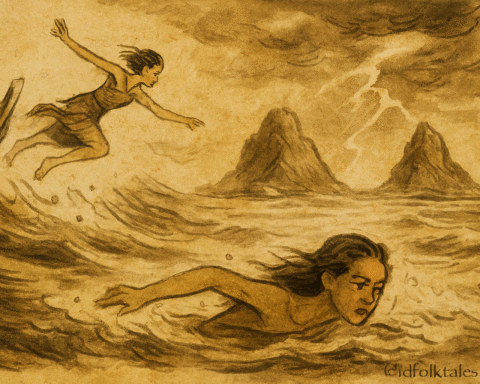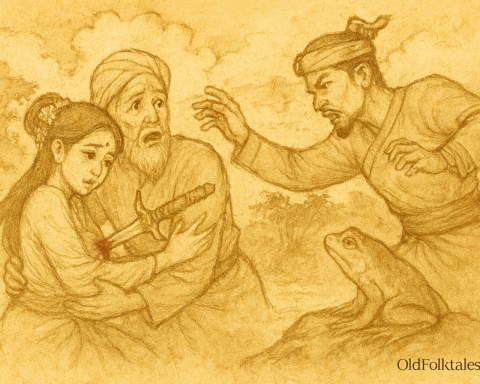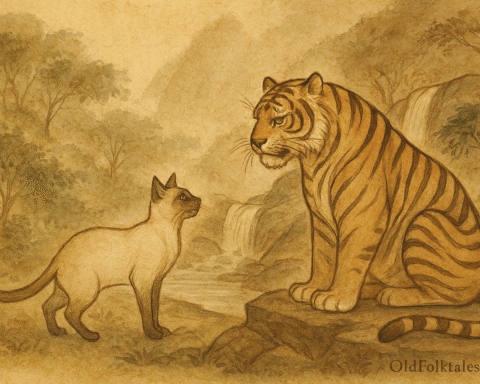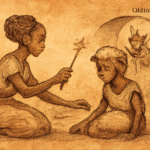More than four hundred years ago, on the verdant island of Langkawi, where emerald waters kissed white sandy shores and rice paddies stretched like golden carpets across the land, there lived a maiden of extraordinary beauty. Her name was Mahsuri, and she was renowned throughout the island as the most stunning woman anyone had ever seen. Her grace and loveliness were spoken of in whispers, her beauty so profound it seemed almost otherworldly.
Mahsuri’s radiance caught the attention of Mat Deris, the son of the ruler of Langkawi. He was captivated by her beauty and gentle spirit, and after a proper courtship, they were married. For a time, their union was blessed with happiness and the promise of a peaceful life together on their island paradise.
The Separation
But peace was not to last. War drums began to sound across the waters. The kingdom of Siam, known today as Thailand, threatened the lands to the south, and soldiers were needed to defend the territories. Mat Deris, as the ruler’s son, was duty-bound to join the warriors marching to battle.
The day of his departure was heavy with sorrow. Mahsuri stood at the shore, watching her husband’s ship grow smaller against the horizon until it disappeared completely. She returned to their home, her heart aching with loneliness and fear. Would she ever see her beloved husband again? Only the gods knew.
Days turned into weeks, and weeks into months. Mahsuri worked in the rice fields and tended to her household, trying to keep her mind occupied and her hopes alive.
The Friendship and the Rumors
During this lonely time, a traveling minstrel named Deramang came to the island. He was a wandering musician who carried tales and songs from distant lands. His music brought joy to the villagers, and his stories provided welcome distraction from the worries of war.
Mahsuri, seeking companionship in her husband’s absence, befriended the minstrel. They would sit in the marketplace, and he would play his instruments while she listened, grateful for the friendship and the temporary relief from her solitude. Their friendship was innocent, merely two people finding comfort in conversation and music during difficult times.
But the villagers began to whisper. Why was the beautiful Mahsuri spending time with this stranger? Where was the propriety expected of a warrior’s wife? The whispers grew louder, more malicious, twisting innocent friendship into something sinful.
The Jealous Mother-in-Law
The cruelest voice among the gossipers belonged to Mahsuri’s own mother-in-law, the wife of the island’s ruler. Jealousy burned in her heart like a fever. She had long suspected that her own husband, the ruler, harbored inappropriate desires for his beautiful daughter-in-law. Rather than confront her husband, she chose to destroy the object of his supposed affection.
She fanned the flames of rumor, spreading vicious lies about Mahsuri throughout the island. “She is having an illicit affair with the minstrel,” the mother-in-law whispered to anyone who would listen. “She dishonors my son while he fights for our people.”
The accusations grew more elaborate, more damning. Soon, the entire island buzzed with tales of Mahsuri’s supposed adultery.
The Unjust Sentence
When word of these accusations reached the ruler of Langkawi, Mahsuri’s father-in-law, he was furious. Perhaps to deflect suspicion from himself, perhaps to silence his wife’s jealousy, or perhaps because he truly believed the lies, he made a terrible decision. He ordered Mahsuri’s execution.
Mahsuri was seized and dragged before the villagers. “I am innocent!” she cried, tears streaming down her face. “I have done nothing wrong! I have been faithful to my husband!”
But no one would listen. The ruler had spoken, and justice (or what passed for justice) would be carried out.
The Miraculous Protection
They tied Mahsuri to a tree in the center of the village. The executioner approached with his weapon and struck her repeatedly. But something extraordinary happened the blade would not pierce her skin. Again and again he struck, but Mahsuri remained unharmed, as if protected by divine intervention.
The villagers murmured in confusion and growing fear. What kind of sorcery was this? The executioner’s arms grew tired, but still Mahsuri stood unscathed, though exhausted from the ordeal.
Finally, Mahsuri understood. The gods were protecting her, proving her innocence, but the stubborn villagers would never accept the truth. They would keep trying to kill her, and her suffering would never end unless she took control of her own fate.
“Stop,” she said, her voice weak but clear. “There is a special blade, a keris inherited from my ancestors. Only that blade can take my life. You will find it in my home.”
The villagers hurried to her dwelling and found the sacred keris, an ancient Malay dagger with a wavy blade. They brought it to the execution ground.
The White Blood and the Curse
The executioner took the ancestral blade and plunged it into Mahsuri’s heart. This time, the blade pierced true. But as her life’s blood began to flow, the crowd gasped in horror and awe.
The blood that poured from her wound was not red. It flowed white as milk, white as innocence itself.
In Malay tradition, white blood was an unmistakable sign of purity and innocence. The villagers had murdered an innocent woman.
With her dying breath, Mahsuri raised her head and looked at the people who had condemned her. Her voice, though fading, carried across the silent crowd with terrible clarity:
“I curse this island for seven generations. May misfortune and suffering befall Langkawi until the seventh generation has passed.”
Then she closed her eyes and died.
The Curse Fulfilled
The gods, it seemed, heard Mahsuri’s dying words. Shortly after her death, the armies of Siam invaded Langkawi. The island’s forces were overwhelmed, and defeat seemed certain.
In an act of desperate defiance, the ruler of Langkawi (the same man who had ordered Mahsuri’s execution) commanded his people to burn their rice paddies. “Better to destroy our own food than let the enemy feast on it,” he declared.
The order was carried out. The golden rice fields went up in flames, filling the sky with smoke and ash. But the strategy backfired catastrophically. The ruler himself was killed by the invading forces, and the people of Langkawi, having destroyed their own food supply, soon faced starvation and terrible suffering.
For generations afterward, Langkawi struggled with misfortune, poverty, and hardship. The curse of Mahsuri seemed to hang over the island like a dark cloud, and the people remembered with shame the innocent woman they had wronged.
The End of the Curse
It was not until seven generations after Mahsuri’s death, that the curse finally lifted. Langkawi began to prosper, transforming into a thriving tourist destination. Today, visitors can pay their respects at Mahsuri’s tomb, where a shrine, a traditional Malay house, and a museum preserve her memory. Her jewelry and the keris that took her life are displayed there, silent witnesses to a terrible injustice.
Travelers can also visit Padang Mat Sirat, the Field of Burnt Rice, where according to legend, grains of burnt rice can still be found in the soil (a permanent reminder of the day the island destroyed its own sustenance and sealed the curse that Mahsuri had pronounced).
The legend of Mahsuri endures as a powerful reminder of the cost of false accusation and the terrible consequences of jealousy and injustice.
Journey through enchanted forests and islands in our Southeast Asian Folktales collection.
The Moral Lesson
The legend of Mahsuri teaches us several profound lessons. First, it warns against the destructive power of jealousy, which can drive people to commit terrible injustices against the innocent. The mother-in-law’s envy led directly to the death of an innocent woman. Second, the story reminds us of the danger of believing rumors and gossip without seeking truth (the villagers condemned Mahsuri based on whispers rather than evidence). Third, the white blood symbolizes that truth will ultimately be revealed, even if it comes too late. Fourth, the curse demonstrates that communities suffer when they commit injustices (the harm done to Mahsuri brought generations of suffering to Langkawi). Finally, the legend emphasizes that false accusations and wrongful execution have consequences that extend far beyond the immediate victim, affecting entire societies for generations to come. In essence, this is a cautionary tale about the importance of justice, truth, and the terrible price of jealousy and hasty judgment.
Knowledge Check
Q1: Who was Mahsuri and why was she famous in Langkawi, Malaysia?
A: Mahsuri was a woman who lived on the island of Langkawi more than 400 years ago. She was renowned as the most beautiful woman on the island and was married to Mat Deris, the son of Langkawi’s ruler. Her extraordinary beauty and gentle nature made her well-known throughout the region.
Q2: Why was Mahsuri falsely accused of adultery in this Malaysian legend?
A: Mahsuri was falsely accused because her mother-in-law was jealous of her. The mother-in-law suspected that her own husband (the ruler) desired Mahsuri, so out of jealousy, she spread malicious rumors that Mahsuri was having an affair with Deramang, a traveling minstrel who had befriended her while her husband was away at war.
Q3: What miraculous sign proved Mahsuri’s innocence when she was executed?
A: When Mahsuri was finally killed with her ancestral keris (dagger), her blood flowed white instead of red. In Malay tradition, white blood is an unmistakable sign of purity and innocence, proving that the villagers had executed an innocent woman. This miraculous occurrence confirmed that she had been falsely accused.
Q4: What curse did Mahsuri place on Langkawi with her dying breath?
A: With her dying breath, Mahsuri cursed the island of Langkawi for seven generations. She declared that misfortune and suffering would befall the island until the seventh generation had passed. This curse was believed to have caused the island’s subsequent invasion, poverty, and hardship for centuries.
Q5: How did the Field of Burnt Rice come to exist in this Malaysian folktale?
A: After Mahsuri’s death, when Siam (Thailand) invaded Langkawi, the island’s ruler ordered his people to burn all their rice paddies to prevent the enemy from using their food. This desperate act destroyed the island’s own food supply, leading to starvation. The field where this occurred is now known as Padang Mat Sirat (Field of Burnt Rice), where burnt rice grains can supposedly still be found.
Q6: What is the cultural significance of the keris in Mahsuri’s legend?
A: The keris is a traditional Malay dagger with deep cultural and spiritual significance. In the legend, Mahsuri could only be killed by her ancestral keris, suggesting it had special powers connected to her family lineage. The keris represents the connection between the spiritual and physical worlds in Malay culture, and its use in her execution made the moment even more significant. Today, the actual keris used to kill Mahsuri is displayed in her museum as a historical artifact.
Source:
Traditional oral legend from Langkawi Island, recorded in various Malaysian folklore collections.
Cultural Origin: Malaysia (Malay/Langkawi Island oral tradition)

